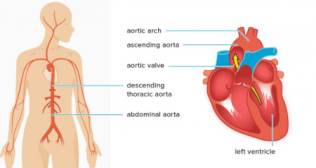
3D Heart Models: Technology, impact & outcomes
Three-dimensional printing, also called ‘additive printing’ is showing itself to be a disrupter across diverse fields. The 3D printer is like the conventional printer except that it prints a 3D object instead of a page. The ink used by it could vary from plastic powder - to gold - to living cells. The printer enables the creator to print a prototype off the computer screen, without investing in a separate dye/cast to cast it. The possibilities of innovation and hence improvement of the product multiply manifold; the product can easily be tailored for each customer. California based Chuck Hull holds the patent for 3D printing (August 1984) and he runs his own 3D printing company now. In an interview in 2017, he admitted to being surprised by the way the medical field has taken up this technology, which he called ‘Stereolithography’. Truly, this is evolving very rapidly in the medical field; it is estimated that by the next decade, 3D printing in the medical field will be a 2billion Dollar industry. This World Heart Day, with this year’s theme being My Heart, Your Heart; let’s understand what 3D heart model is and how the technology is helpful in paediatric heart surgery.
Every 3D printed model starts out as a Computer Aided Design (CAD) file. The file may use information from a CT scan or MRI scan or a similar high-resolution imaging study. The CAD file is converted into .stl (Stereolithography) file format; this format is used by the 3D printer to print an object. There are various kinds of 3D printer technologies in use; some of the most common ones are Fusion Deposition Modelling, Thermal Inkjet Printing and Selective Laser Sintering. Thermal Inkjet Printing (with bio-ink) is best suited to use in bioprinting. One of the first specialities to adopt it was the dental field, to make implants. At the present time, 3D printing is actively used by Orthopaedics, Neurosurgery, Oncosurgery, Plastic surgery, Oto-Laryngology and Cardiology.
Paediatric Cardiology deals with structural defects of the Heart and/or its vessels. Treatment of the disease is often in tiny babies and children, frequently involving complex repairs. The tool for deciphering the anatomy is the Echocardiogram which suffices in most cases. In some cases however more detailed information is desired. A CT scan or MRI study of the Heart helps in a few of these complex cases. A percentage of these cases benefit from 3D printed Heart models of the diseased Heart.
A typical example is a Heart defect called the Double Outlet Right Ventricle (DORV); the affected baby needs a Heart surgery within the first 6months of life for the best outcome. The best long-term outcome centres on achieving a normal looking Heart after surgery. It is of immense help if the surgeon has a crystal-clear idea of what to expect once the Heart is opened up on the operating table, as the surgery involves complex tunnelling within the Heart. 3D printed model enables the surgeon to study the Heart in detail. The model may be printed in a soft material so that the surgeon can perform a mock surgery (make stiches) on the model, and be better prepared for problems that arise. This is likely to make the actual surgery safer, faster and hence may be followed by a quicker recovery with fewer chances of complications. There are a multitude of scientific papers that have reported on their experience with 3D printing for complex Heart surgeries and the outcomes.
Similar to delineation of intracardiac anatomy, in certain defects, fine details of vascular anatomy add to patient safety, and 3D printing the thoracic cage has been shown to be helpful. Active research in 3D printing is being carried out for other Heart diseases and situations. Currently, existing drawbacks to using a model to study a condition better include, radiation exposure (if a CT scan is used), composite model of the heart (not true Systolic or Diastolic phase), lack of fine resolution, and cost of printing.
Mechanical or Bioprosthetic valves and parts of vessels could be custom printed easily to suit the patient’s size. The final frontier is to bio-print the Heart or its defective portions in the laboratory; recent reports indicate that it is in the realm of reality. The impact of 3D printing in the medical field and especially in the Paediatric Cardiac speciality looks promising. It is a matter of time before its use becomes commonplace.
Categories
Clear allMeet the doctor

- Paediatrics | Paediatric Cardiac Sciences
-
15 Years
-
2000



















